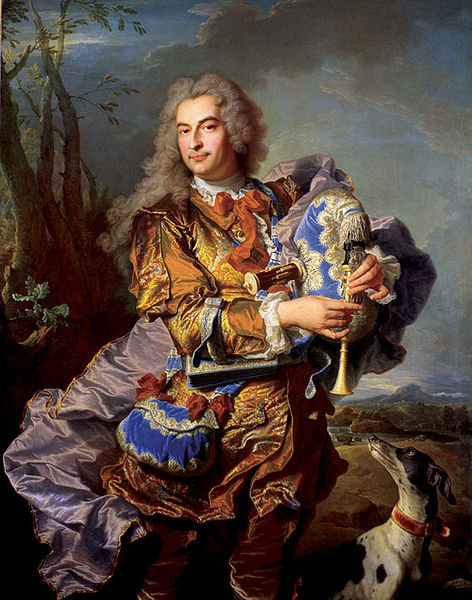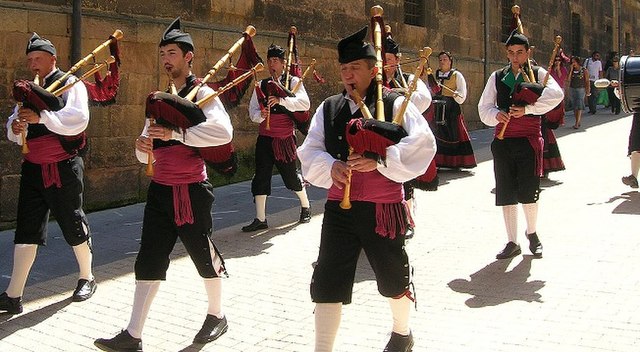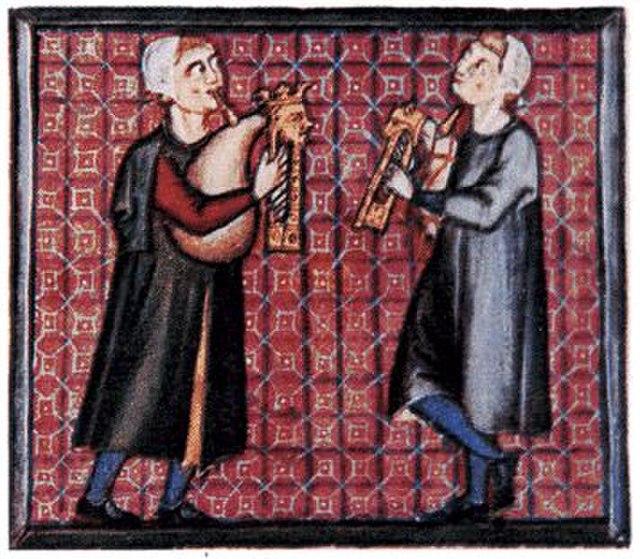The musette de cour or baroque musette is a musical instrument of the bagpipe family. Visually, the musette is characterised by the short, cylindrical shuttle-drone and the two chalumeaux. Both the chanters and the drones have a cylindrical bore and use a double reed, giving a quiet tone similar to the oboe. The instrument is blown by a bellows.
An 18th-century musette de cour on display at the Berlin Musical Instrument Museum, Germany
Gaspard de Gueidan playing the musette de cour, painting by Hyacinthe Rigaud, 1738, Musée Granet, Aix-en-Provence, France
Drawing of the parts of the musette de cour from the Encyclopédie by Diderot and d'Alembert, ca. 1770
Bagpipes are a woodwind instrument using enclosed reeds fed from a constant reservoir of air in the form of a bag. The Great Highland bagpipes are well known, but people have played bagpipes for centuries throughout large parts of Europe, Northern Africa, Western Asia, around the Persian Gulf and northern parts of South Asia.
Bagpipers from Asturias
A detail from the Cantigas de Santa Maria showing bagpipes with one chanter and a parallel drone (Spain, 13th century).
A detail from a painting by Hieronymus Bosch showing two bagpipers (15th century).
A Great Highland bagpipe practice chanter







